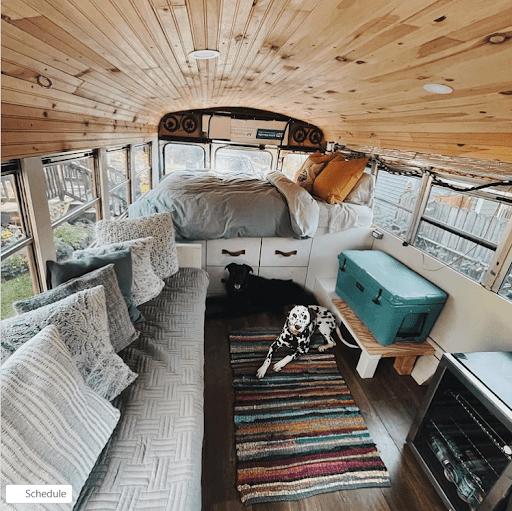

Second Pro Tip: Rent a vehicle close to the size that you’re considering purchasing first (U-Haul has trucks in a number of sizes). Pro Tip: Bring a tape measure when you go look at a bus - private sellers and dealers alike often have no idea how big their buses actually are. Keep these things in mind when you check out buses - imagine taking it to the grocery store and a small corner gas station. At 30+ feet you’ll always need two spaces. Anything over 24 will typically require backing in and hanging partially over a curb, or parking in a pull-through space. Vehicles up to about 21 feet fit comfortably in a single spot. If you’re travelling solo and plan to spend time in the small streets of San Francisco or NYC - get the smallest bus you can find (think mini bus, 4 window, or turtle top) and be ready to create an open floorplan for your conversion layout.Ī standard parking space is typically 19 feet long.

If you’re travelling with a family, or three Great Danes and your six foot tall significant other - interior space is probably going to be very important, and you’ll need to get comfortable maneuvering something big around as you travel. There’s one rule of thumb when it comes to understanding size in a conversion - the more living space you have inside, the more challenging the bus is to drive around. Every shuttle bus from every manufacturer is different. In the shuttle bus world, there is no such standard, so be ready to throw those terms out the window. In the Skoolie community, you’ll often hear things like “I have a 6 window bus”, because all school buses are constructed similarly behind the cab. Don’t set yourself up to be unhappy with your rig from the get-go. Room for the kids’ car seats? Long enough for a full-sized bathtub? Small enough to fit in a regular parking space? You decide, and keep it in mind throughout. It’s all about your personal situation and preferences - but it’s a must to know what your end goals are before you start. That said, we never would’ve bought this bus if the co-pilot seat had been missing. The bus we bought is 25 feet long with a co-pilot seat that we spent $18,700 for - but we got a mechanically solid bus from a rust-free state, so we were exceedingly happy with the purchase. For example, we originally wanted a bus 24 feet or less, with a co-pilot seat, under $15k as our main search criteria. But you also have to know where you can be flexible. How many people are you traveling with? How often will you be in cities? Are you full-timing? Are you mechanically inclined? All of these things matter when you pick out your bus. You’ll want to take your final product into consideration before even starting your first bus search. That said, that doesn’t mean you can’t educate yourself on some of the most important features to look for and pitfalls to avoid so that you can get a bus that works best for you. Even if you buy a brand new vehicle, it will probably have a feature or quirk you find you wish you didn’t have. Under no circumstances should you believe anyone who tells you there is one single “best” kind of bus to purchase - that’s simply untrue. This isn’t going to be what you want to hear right off the bat, but trust the process and stick with me. First: Understand There is No “Perfect” Shuttle Bus For Your Bus Camper Conversion

Let’s take a look at all of it so that you can be better prepared when you head to your nearest dealership or to meet an eager Craigslist seller. There are some key things you should look for in every vehicle you look at, and some features that will be deeply personal choices that will vary from person to person. You can’t start your buslife journey without a bus! Acquiring a vehicle to convert is often one of the hardest parts of the conversion process, believe it or not.


 0 kommentar(er)
0 kommentar(er)
